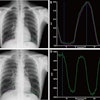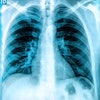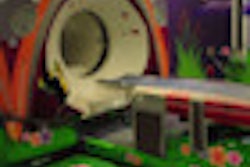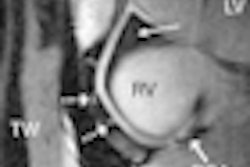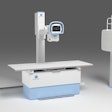CHICAGO - A few simple interventions in the fluoroscopy suite turned into impressive reductions in radiation for children undergoing cardiac procedures, according to researchers presenting at the 2010 scientific sessions of the American Heart Association (AHA).
"A radiation safety protocol which increases physician awareness and uses low-dose imaging and real-time radiation monitoring is effective in reducing radiation exposure to pediatric patients," said Akash Patel, MD, an electrophysiology fellow at the Children's Hospital of Philadelphia.
Radiation exposure to children during various procedures is not insignificant. "Long-term clinical consequences of radiation exposure in young patients during electrophysiology procedures are unknown," Patel said.
The interventions used in the study were deceptively simple -- such as simply telling physicians when they had reached a level of 1,000 mGy -- but the impact was substantial among patients undergoing electrophysiology studies and balloon ablation procedures.
In the preimplementation cohort of 70 patients, for example, the total skin entrance dose averaged about 1,319 mGy per patient. After the interventions were put in place, the total skin entrance dose averaged 628 mGy among the 61 patients included in the postimplementation period. The difference achieved statistical significance (p = 0.04).
Another procedure change was designed to decrease the dose of radiation that can cause skin damage. The intervention was as simple as repositioning equipment and changing its angle of focus, Patel explained. This resulted in less exposure as measured by the lateral camera skin entrance dose. The dose averaged 1,240 mGy before implementation and 696 mGy after implementation (p = 0.01).
"In these procedures, doctors achieved a 92% success rate in completing the procedure under fluoroscopy guidance," he said. "There were no differences in outcomes before or after the interventions were implemented," he said.
Overall, Patel said, the interventions resulted in a 22% reduction in median fluoroscopy time, a 44% reduction in median dose area product, a 51% decrease in total effective dose, and a 52% decrease in median skin entrance dose.
By Ed Susman
AuntMinnie.com contributing writer
November 16, 2010
Related Reading
Measuring efficiency improves technologists' productivity, October 5, 2010
High cardiac imaging doses seen in U.S. population, July 9, 2010
JACC special issue tackles radiation dose in cardiac imaging, May 14, 2010
Young adults face higher CT radiation risk than seniors, May 4, 2010
Angio dose related to patient size, disease complexity, March 15, 2010
Copyright © 2010 AuntMinnie.com

